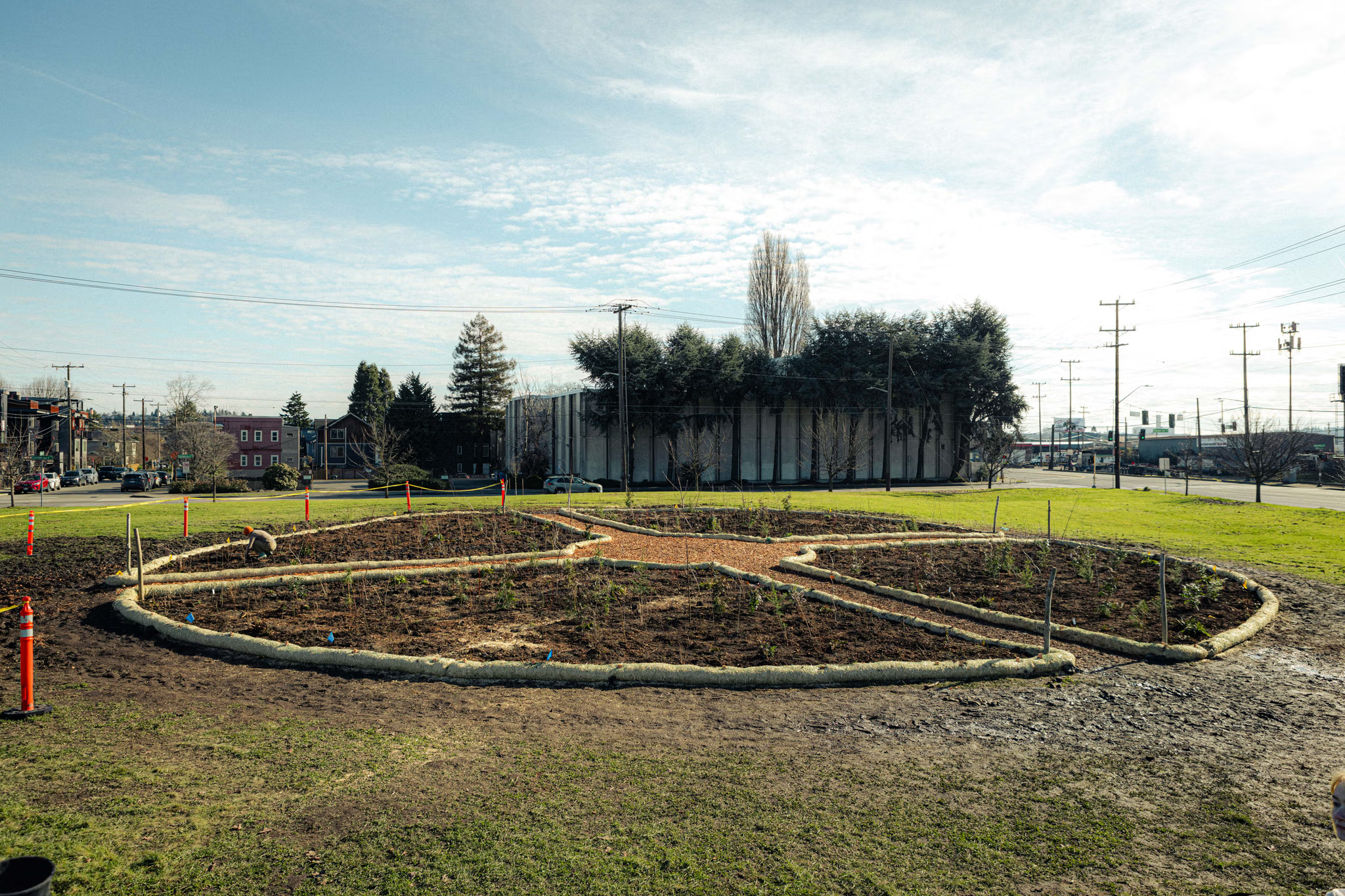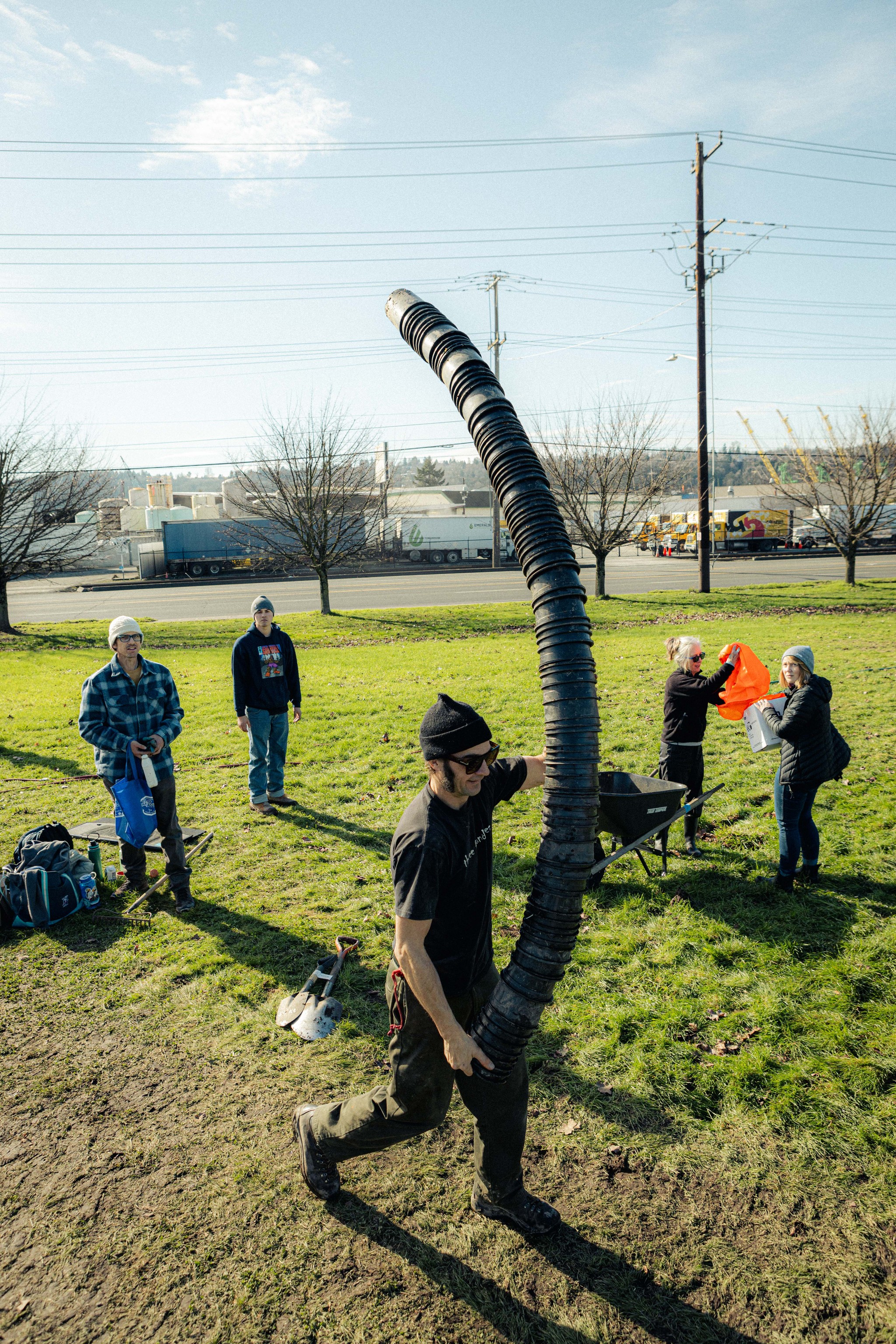Georgetown Community Forest
Combatting industrial pollution and supporting public health in Seattle.


0
Trees
0
Square Feet
0
Native Species
0
Youth Impacted
The Georgetown Community Forest at South Seattle College is a transformational project in South Seattle, converting the site of a former gas station into a flourishing native forest for the diverse communities living and working in the area.
In the Duwamish Valley, the need for increased tree canopy is critical. The area has long faced environmental challenges, including air pollution and heat island effects due to its industrial history. The historic Duwamish River that flows through the area has been identified as one of the most polluted waterways in the USA. Expanding the tree canopy not only improves air quality but also provides essential shade, lowers temperatures, and supports local biodiversity. As the community faces the disproportionate impacts of climate change, tree canopy restoration becomes a key strategy for building resilience and promoting environmental justice.
Forest Maker
Ethan Bryson


Urban Heat Profile
0°F
Surface Temperature Difference
The Urban Heat Island Effect is affecting cities more and more each year and temperatures in urban areas can go up to 12 degrees hotter. This can be reduced and prevented by planting urban forests like this. We collected the air temperatures on a hot day in July at Georgetown Community Forest and saw amazing results.

Forest Report: 2025
0 Months
Forest Age
0%
Survival Rate
0m
Average of Tallest 3 Trees
This forest has been growing exceptionally well but recently struggled during the very dry and hot Seattle summer. There have been red elderberries which the birds know how to enjoy safely by spitting the seeds out. Serviceberry, currants, camas, noting onion, and lupine have been abundant and spreading. The Lupine flowers attracted abundant native bees through the summer.
Biodiversity Notes:
“We are very thrilled to bring more trees to our community. Canopy is urgently needed to expand for Georgetown and South Park - where the majority of people of color live - to filter a large amount of air pollution from different sources, as well as reduce extreme heat temperatures."
Paulina López, LLM, Executive Director, Duwamish River Community Coalition
Forest Report: 2024
0 Months
Forest Age
0%
Survival Rate
0m
Average of Tallest 3 Trees
The forest is growing impressively. In seven short months, the alders and aspens have grown to nearly three meters tall, highlighting how these fast-growing, pioneer species shoot up in growth spurs to give shade and protection to the remainder of the forest.
Most of the planted saplings have survived well - rabbits have been seen eating some of the plants around the forest, but the affected trees are already growing back. The forest has seen lots of animal activity - we’ve seen worms, bees, and other pollinators, as well as pigeons, crows, and sparrows. This is especially remarkable given the forest’s location, surrounded by industrial complexes.
Planting: February 2024

"The forest is in the middle of several Duwamish placenames on the once meandering Duwamish River. It was a rich source of tidal marshlands for both fish, waterfowl, aquatic life and mammals. It is also near a village site called dxʷqʷiɬ'əd (pronounced like dhoo-qwhill-ud) which means large open space or large flat area in the bend of the river. The Duwamish appreciate the re-introduction of native plants in this sacred place."
Nancy Sackman, Duwamish Tribe Cultural Preservation Officer
Why Georgetown Community Forest?
This environment has created significant public health challenges, culminating in shorter lifespans for residents than in surrounding areas. Life expectancy is 8 years shorter than the City of Seattle and King County averages, and a full 13 years shorter compared to more affluent, predominantly white neighborhoods in Seattle. Furthermore, local children are 3x more likely to develop asthma than in other parts of the city.
Georgetown Community Forest aims to heal the land and the people living on it. Over time, soil health will improve and biodiversity will thrive. The forest improves air quality in a high-traffic area, enabling local people to breathe better, whilst offering a calm space where they can immerse themselves in Nature.
“We live in an urban desert surrounded by industries and pollution. This is what we call environmental racism. The Healing Forest will bring us hope, and an opportunity to filter a tide of polluted air that comes from everywhere, noise buffering, and a good engagement and ownership with the community.”
Paulina López, LLM, Executive Director, Duwamish River Community Coalition



















































